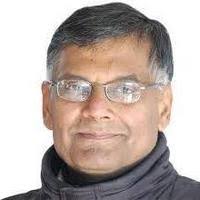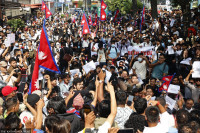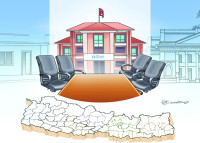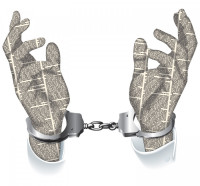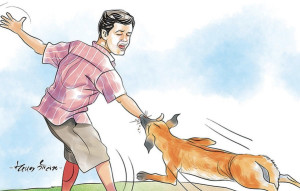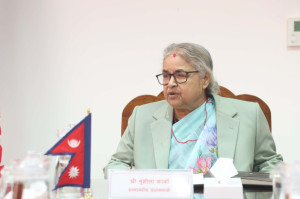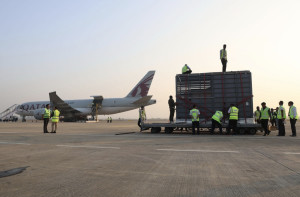Columns
Reclaiming an urbane identity
There is a confusion over building a distinctive identity for Janakpur.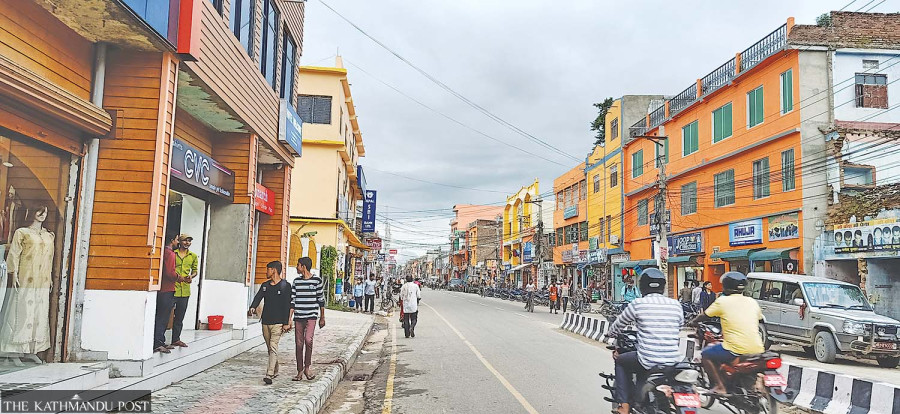
CK Lal
Janakpur hasn’t yet been able to resolve its identity crisis. It doesn’t seem to be able to decide whether it wants to remain a site of pilgrimage, emerge as a tourist spot, develop as a regional service centre with educational and health facilities or just be content with its newest identity of being the capital of Madhesh Pradesh. The contradiction between the desire to remain a holy town for Vaishnavs and the dream of becoming a secularist capital of a province is most perplexing.
Karima Begum is a hard-boiled politician, but even she once complained bitterly that the moment house-owners heard her name, they refused to rent her a room. Perhaps because of his faith, Lalbabu Raut—the only provincial Chief Minister to have survived for the full term in the country so far—has since been forced to fight for a place in the murky politics of Madhesh.
Ancient antecedents of having been the opulent capital city of the Videha kings notwithstanding, a settlement had emerged as a seasonal point of exchange—a trading centre—between the hunter-gatherers of the hills and mountains up north and the farmers and herders of the flatlands in surrounding areas by the 6th century BCE. In the 5th century BCE, traders from the area journeyed a short distance away to Vaishali to pay their obeisance to Buddha and Mahavira.
By the time of Karnats of Simraungarh, indigenous practices of worshipping sacred trees and holy mounds had been subsumed into the Shaiv and Shakta streams in the Sanatan flow of multiple faiths. Tantric practitioners multiplied. The Vaishnavite sect followed in the footsteps of Sufi Islam into the Brahmanical land of Mithila.
The Janakpur of the Ramayana era is believed to have been revealed to sanyasi Chaturbhuj Giri. When another itinerant sanyasi Sur Kishor Das arrived at the site in the mid-17th century, Aurangzeb was already on the Mughal throne. The legend has it that the venerable sanyasi found a golden statue of Goddess Sita—daughter of King Janak—on the exact spot where the Janaki Temple now stands.
In times of yore, it was not uncommon for priests to throw valuables into a waterbody to save it from marauders. They also sometimes buried idols in the earth to prevent them from being confiscated, broken or defiled by the ‘impure hands’ of Muslims, Mlechchhas or outcastes. It is possible to argue that what the sanyasi found had once already been in a shrine that got looted, vandalised or destroyed.
Once Janakpur came under the control of the Gorkha Empire, forested and cultivated lands were granted to the warriors and courtiers of the Shah realm in lieu of their services to the crown. Many inhabitants of the area fled south to save themselves from the wrath of the victors. The East India Company controlled the region for a while in the early 19th century, but soon returned the territory in terai to the Gorkhalis to buy their loyalty.
With the consolidation of Shah-Rana rule, hard times for Maithils began which have not ended even after the abolition of monarchy. The Janaki Temple is the pride of Janakpuriyas. It wasn’t commissioned by any Maithil but by a Bundela queen and was built by the craftsmen of Faizabad.
Sacred soil
It is believed that the childless Maharani Vrish Bhanu Kunwari of Tikamgarh had already got a temple for the family deity—Lord Rama—built at Ayodhya. Despite prayers at Kanak Bhavan, the magnificent abode she had commissioned at the birthplace of her lord, she remained childless. Upon the instructions of her Guru, she began to build a splendid seat for Sita in 1896, and she was blessed with a son within a year. Unfortunately, she died before the completion of the temple, but her sister finished the task in 1911 and became the new Maharani. It’s a beautiful story, and nobody needs to question its authenticity.
The sanctified soil of a religious site—a dham—is sacred and worthy of being applied on one’s forehead. In olden times, even the feet that had touched the earth of the hallowed ground of a dham were considered worthy of reverence. The tirthasthal (pilgrimage place) consecrated by the presence of the divine doesn’t need a shrine. But building temples is a form of ‘soft power’.
Rulers erect gigantic monuments for their deity to dazzle the laity, reward priests and memorialise themselves. Merchants build temples to acquire respectability. It is possible to speculate that the Bundela dynasty was aiming to be recognised as the patron and promoter of the Ramanandi sect by twining the seats of Ram and Sita. The Janaki Temple certainly gave Janakpur its identity as a dham, which the municipality added to its name a few years ago.
During the Rana rule, Janakpur acquired an added function of being a seat for Gorkhali landlords who came to control vast tracts of land in the countryside. Since most of them were Shakts, the Rajdevi shrine—purportedly the patron deity of Videha kings—in the annexe of Ram Mandir began to reclaim its significance of the Tantra period. The bomb thrown at King Mahendra’s car immediately after the royal-military coup sealed the fate of the town. It was allowed to decay and degenerate for almost three decades.
The Janakpur Cigarette Factory kept the town’s economy humming for a while. In the 1990s, it lost its primacy to a more aggressive competitor in the profit sector and then had to cease operation. By the early aughties, the town was left with just four interrelated functions besides religious rituals: Politicking, fixing deals, informal cross-border trade in precious metals and a service centre for labour export to West Asia and Malaysia.
A primitive form of pleasure industry—legitimate outlets for food and drinks and illegitimate enterprises to fulfil carnal desires—had begun to undermine the sanctity of the city. The three Madhesh uprisings have helped Janakpur reclaim its noble roots, but the confusion over building a distinctive identity for the city remains.
Dormant distinction
A city father painted the town saffron in an effort to promote Hindutva ideology without realising that an aggressive Ram or a muscular Hanuman goes against the ethos of Ramanandi sect of Vaishnavs which preaches love, compassion and service. Preferences of the present mayor aren’t clear, but he had shown no sign of being opposed to Hindutva politics.
The headline news in a Nepali language daily of Janakpur proclaims: Provincial government building the Ashrams of Osho and Neem Karoli Baba in addition to erecting statues of Sita-Ram and Lav-Kush. Such modest attempts are unlikely to compete with the Rs16 billion project of building Punaura Dham with a Disneyland-esque design across the border in Sitamarhi. Garish welcome arches, glittering shrines and rituals of performative religion don’t add dignity to an ancient pilgrimage centre.
Perhaps Janakpur needs to pay more attention to rediscovering its identity of once having been a civilising city with better liveability, more intellectual activity and less commercialisation of everyday life. The American ‘philosopher of everything’ Lewis Mumford claims that “… it is art, culture, and political purposes, not numbers that define a city.” The dictum applies even more to settlements with their roots in antiquity.




 6.21°C Kathmandu
6.21°C Kathmandu